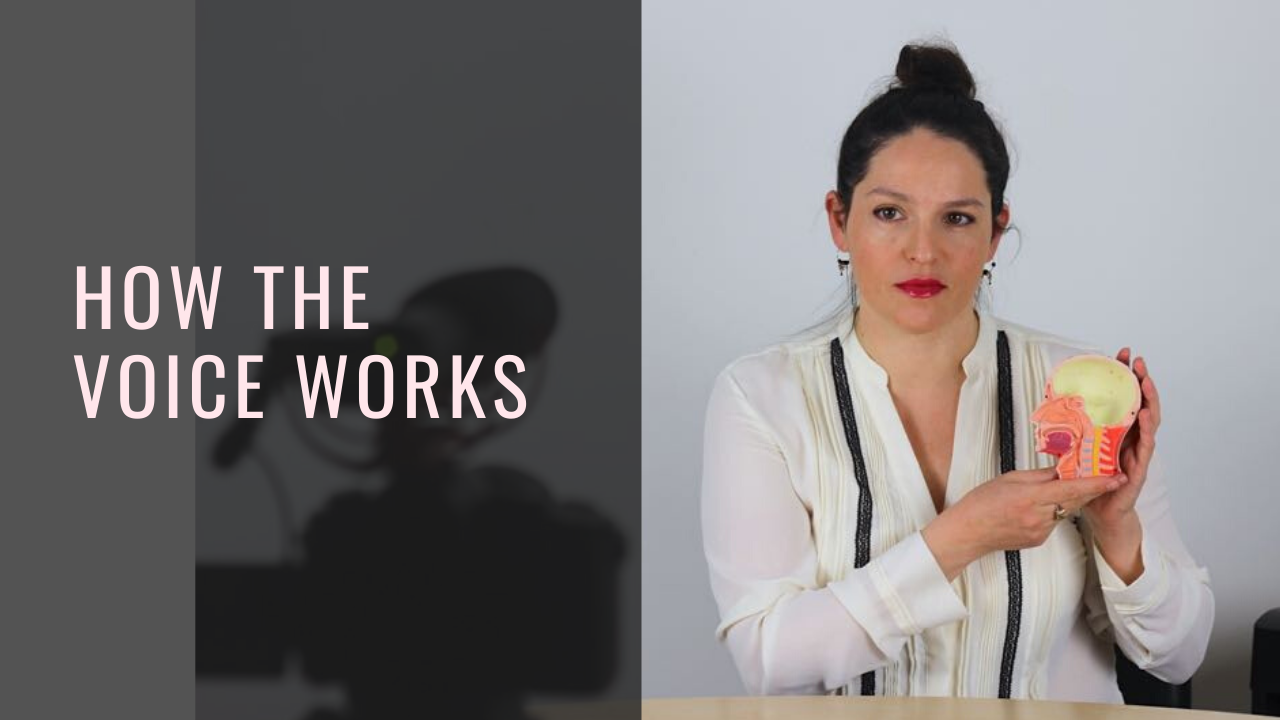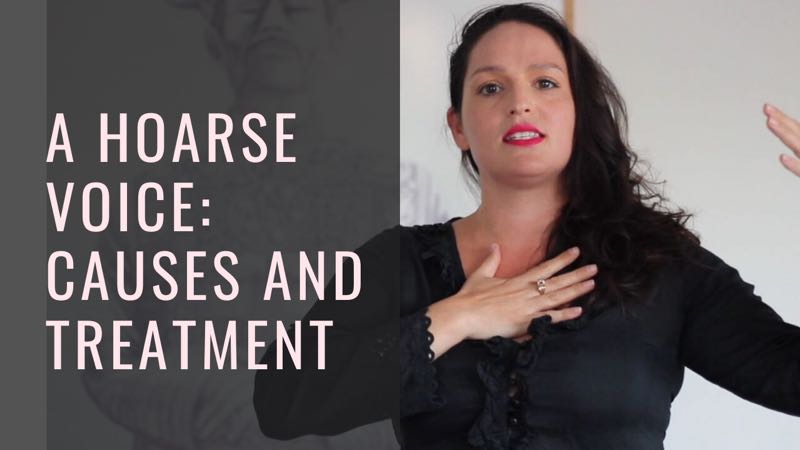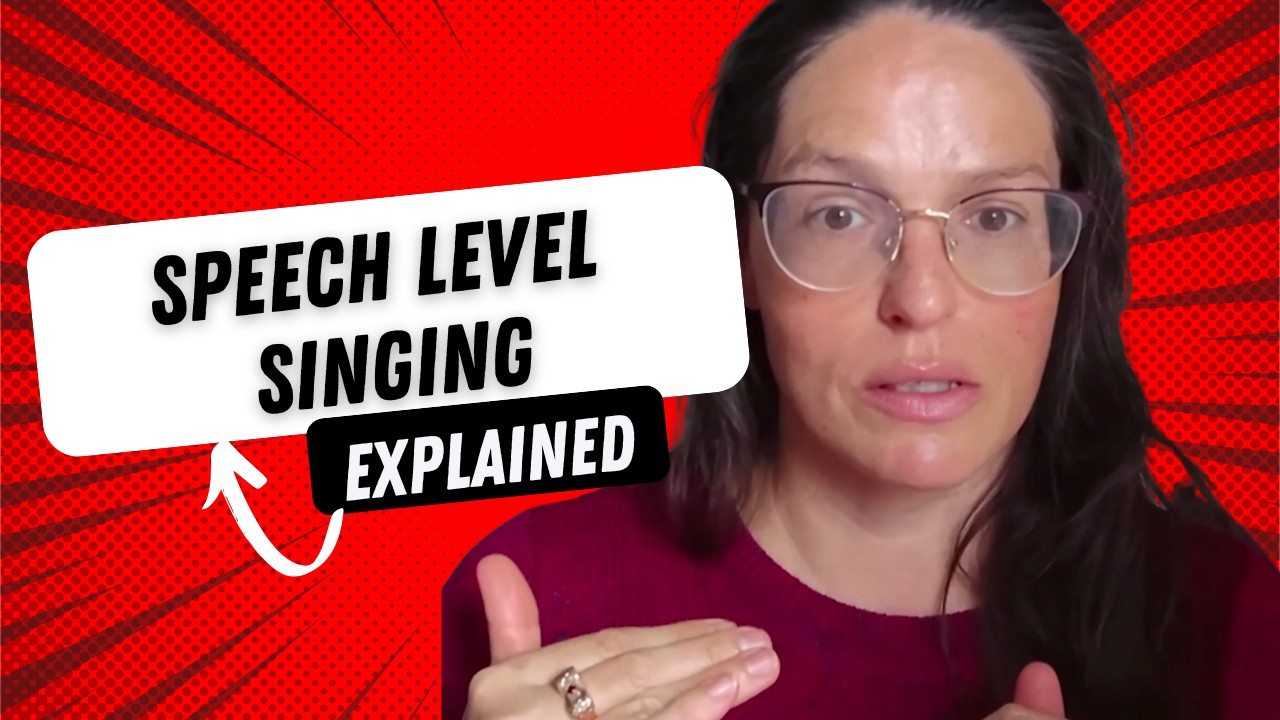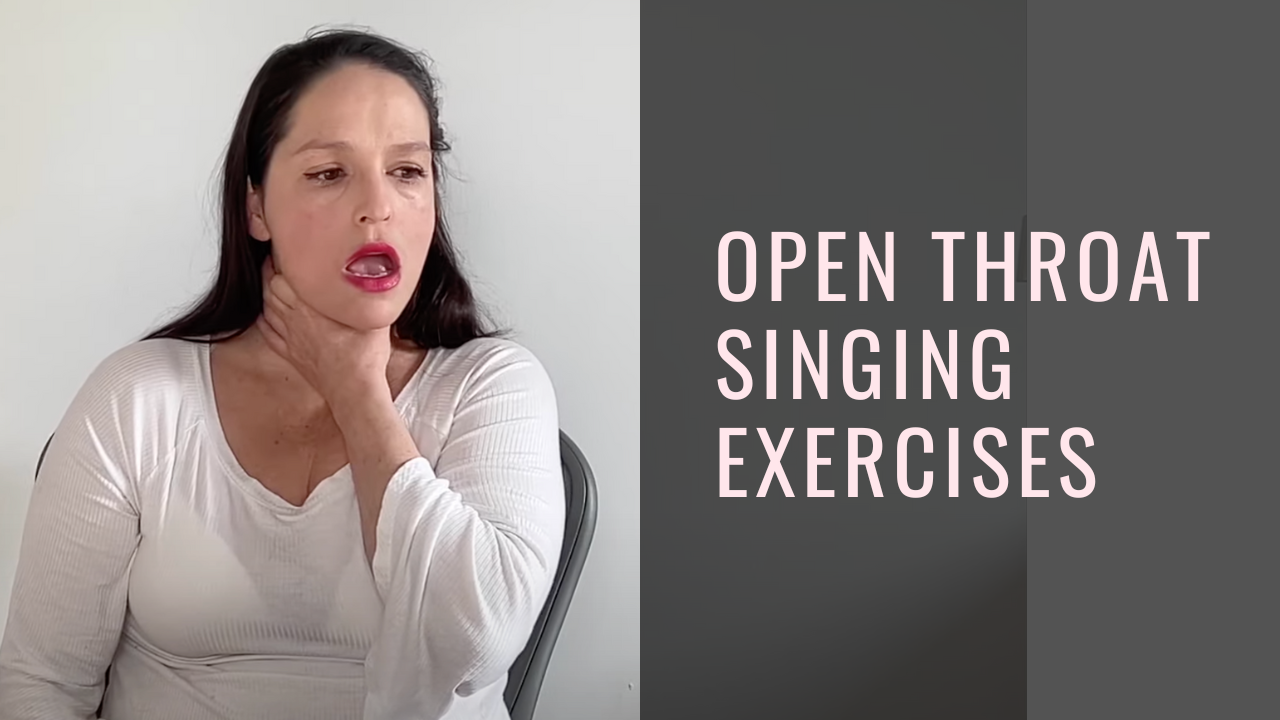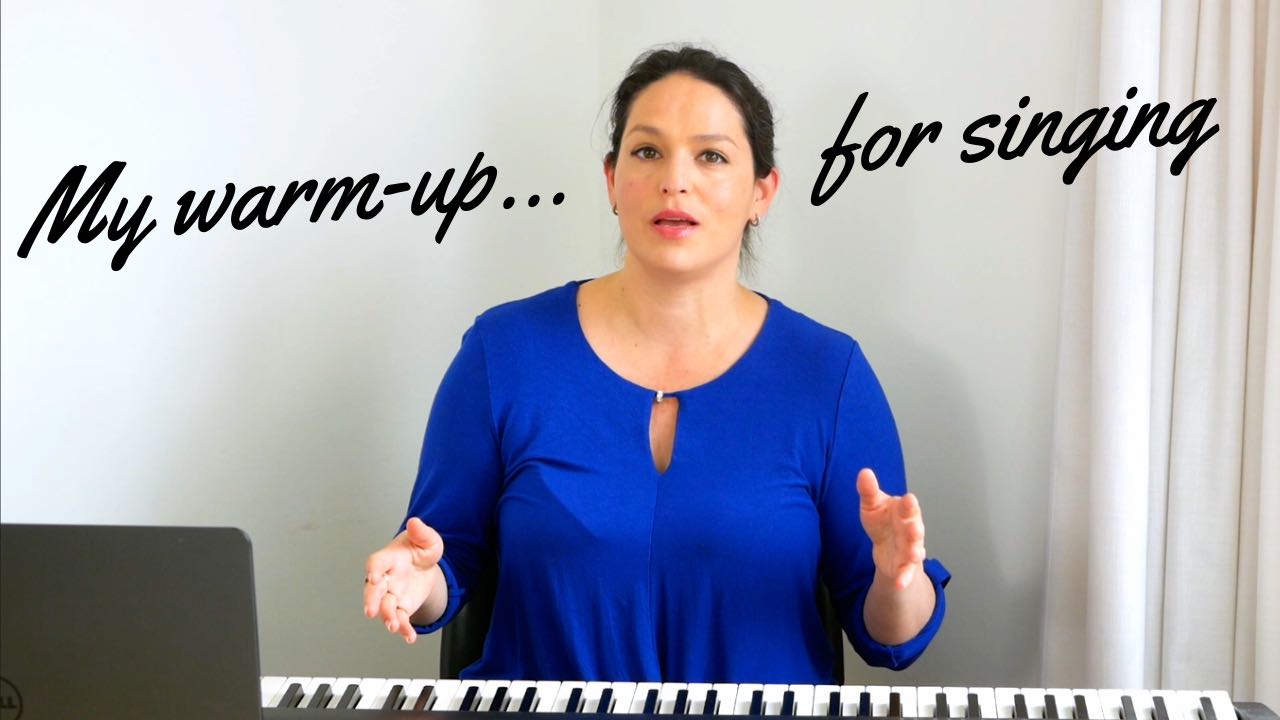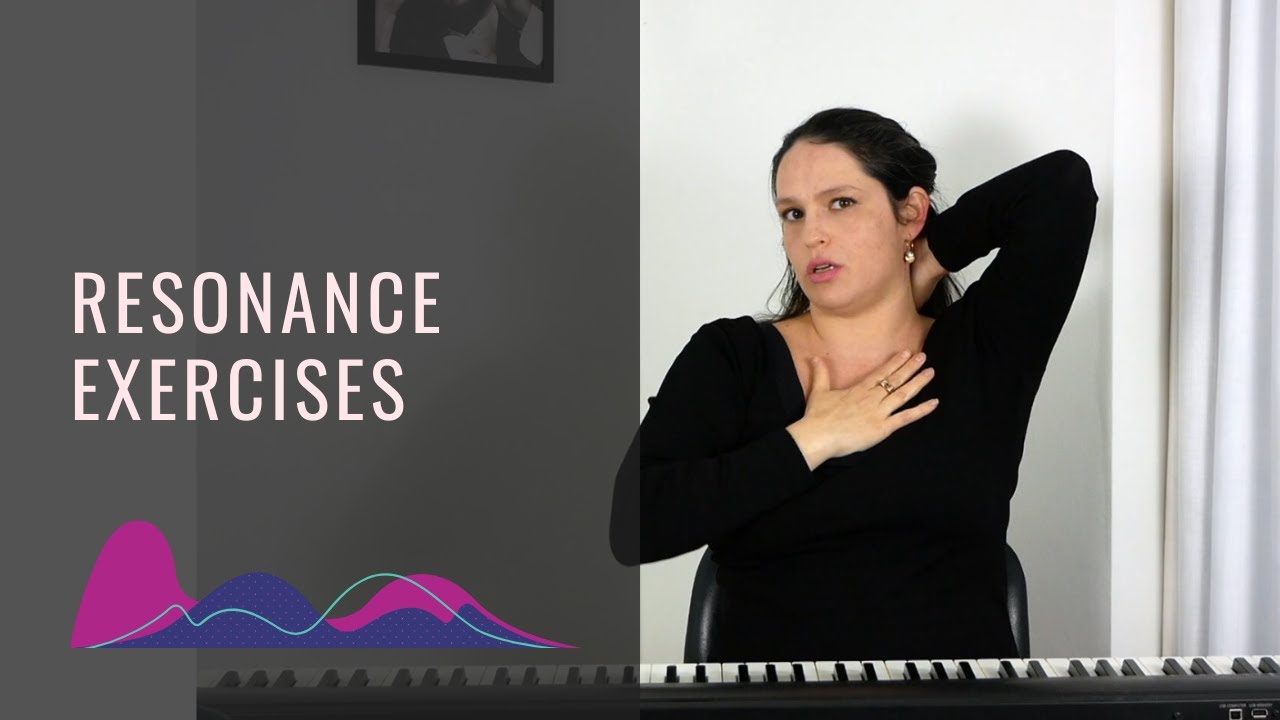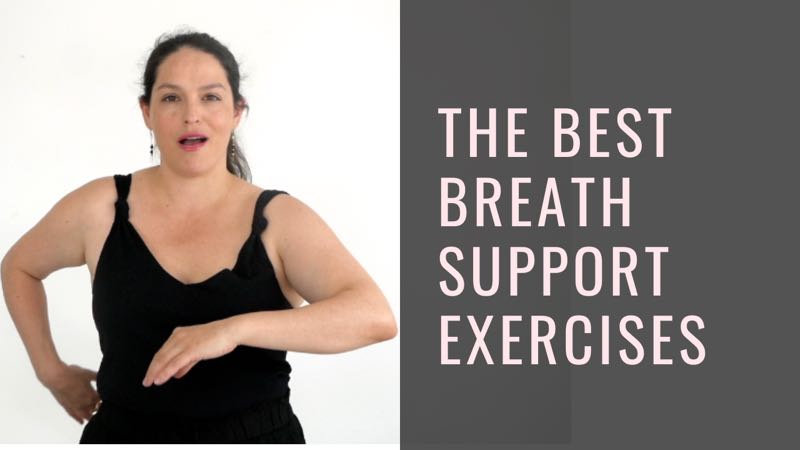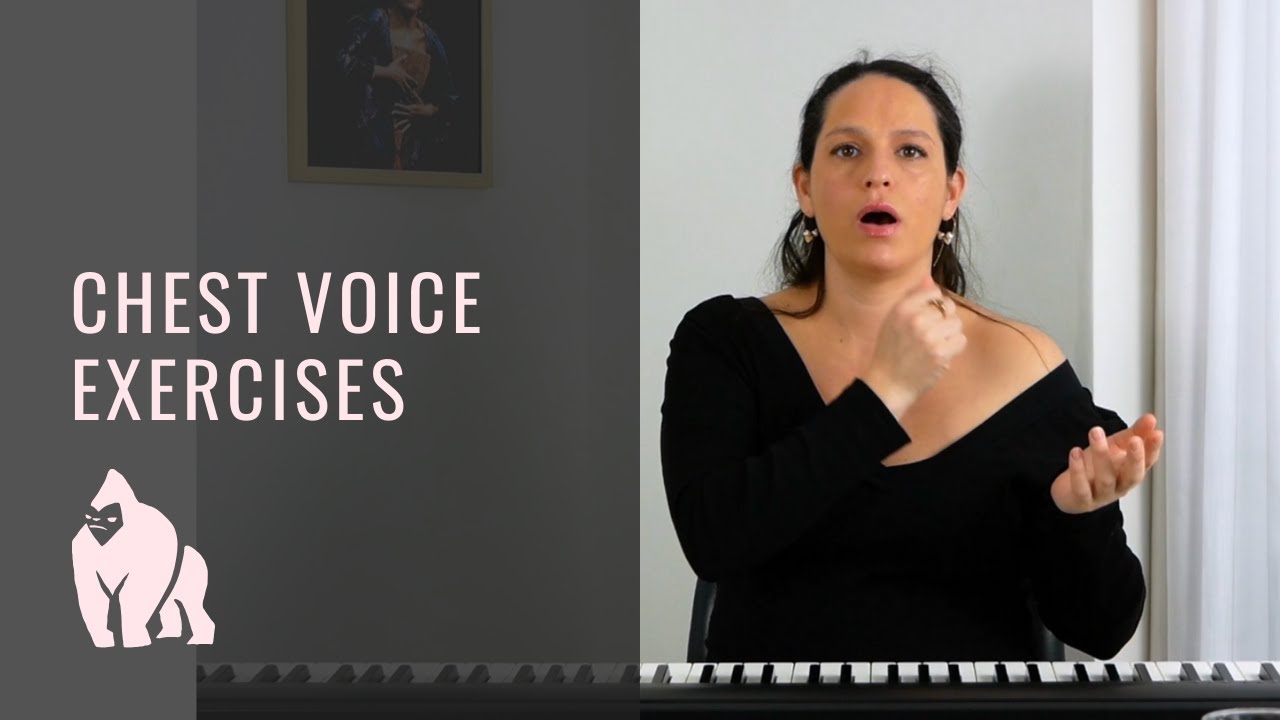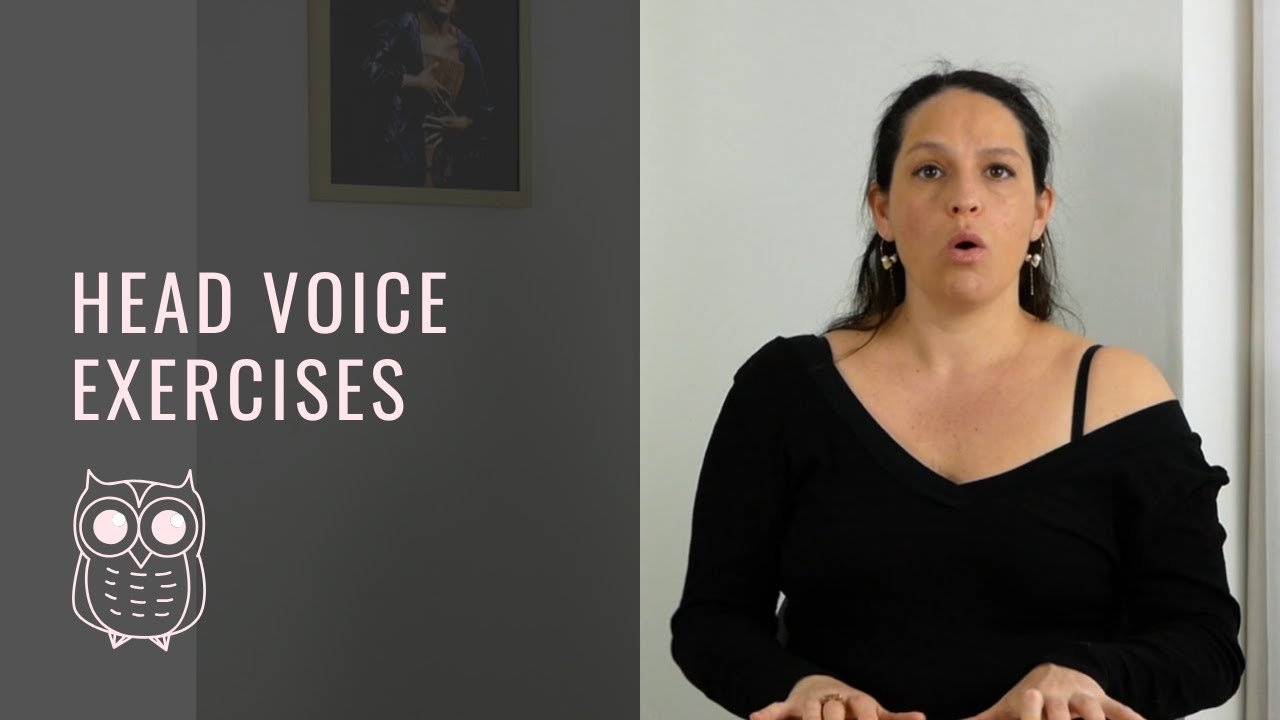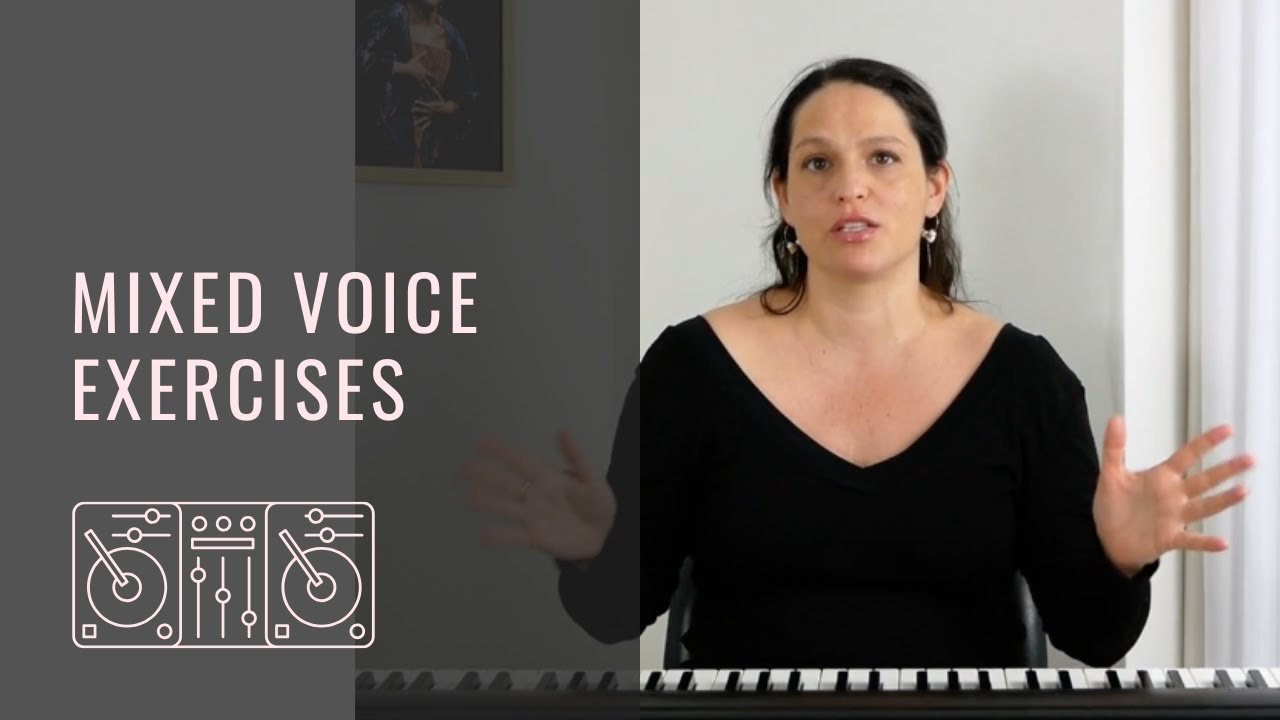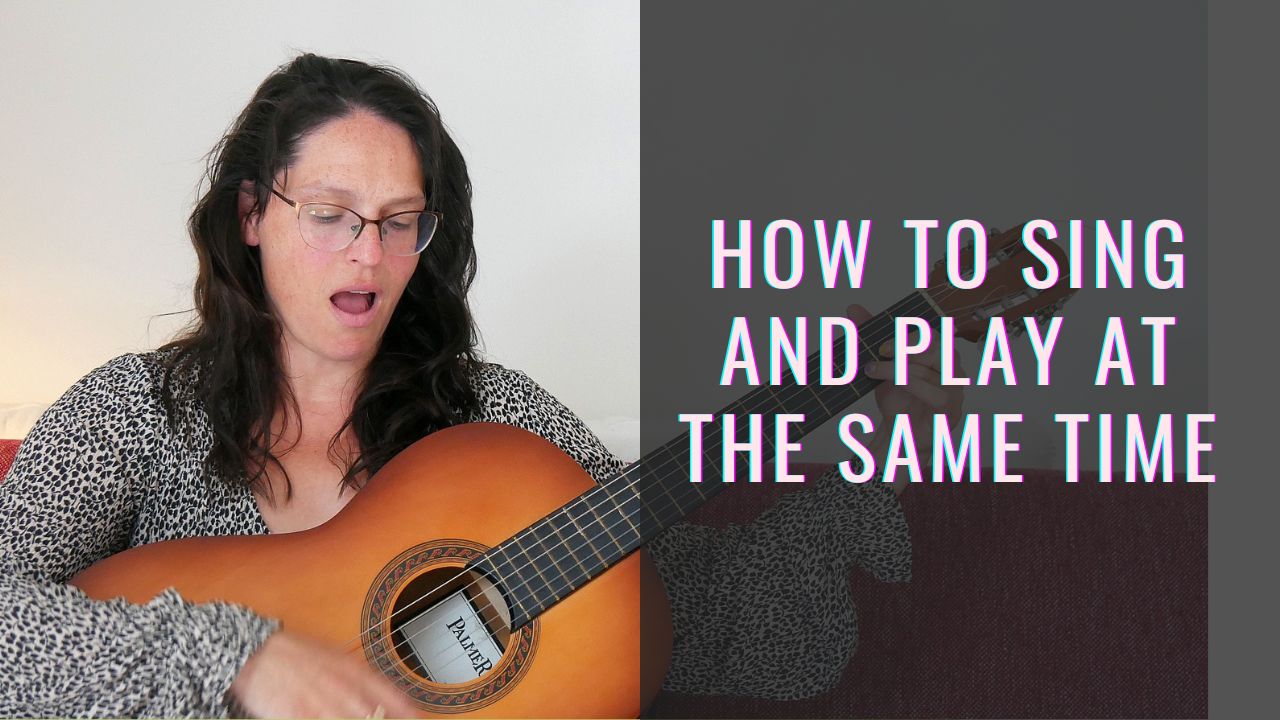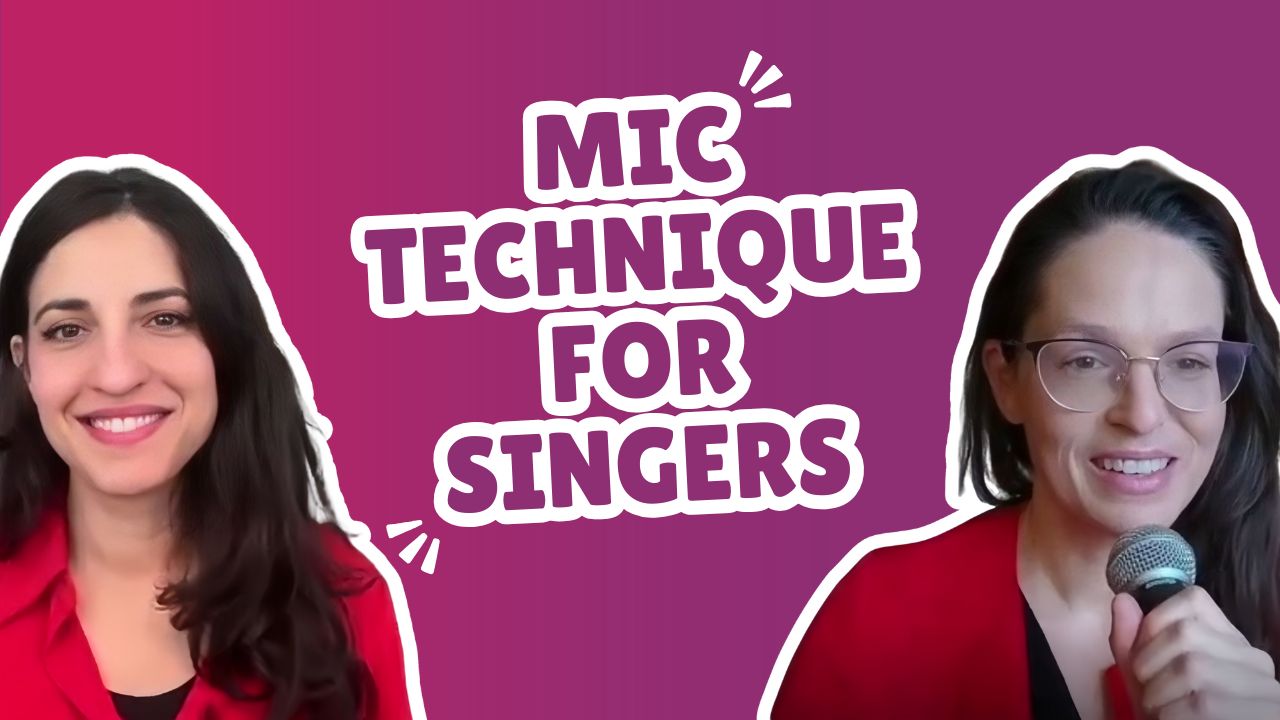
Every singer you’ve ever admired, whether they knew it or not, was doing something right, technically. Great singing doesn’t happen by accident: it's the result of applying certain techniques - and picking the right vocal exercises to implement them.
View this page of singing techniques as a toolbox. If How to Learn How to Sing is the roadmap that shows you the journey from beginner to performer, then this guide is your toolbox. Here we go deeper into the techniques and exercises that shape your voice.
We'll start with removing obstacles such as straining and a raspy voice. Once that's done we move onto increasing volume, range, high notes, and other 'quantitative' factors. After that, you can work on expressiveness like vibrato.
Your singing techniques journey at a glance
- Know your voice type (but don’t obsess)
- How singing works: the mechanics behind your voice
- Free your voice from strain, rasp, and tension
- Learn how to sing in tune
- Learn open throat singing to unlock resonance
- Get a Checklist: max of 3 vocal techniques your teacher told you to learn.
- Work on vocal technique: build strength, work on safe high notes, get control
- Add artistic techniques: vibrato, mic technique, musicality
1: Know your voice type
As a singer, you need to understand what voice you’re working with. So before we'll jump to cool techniques like belting, vibrato and singing, let's start with some perspective.
What is your voice type?
Every singer, at some point, wonders: Am I a soprano, a tenor, a baritone? Or maybe something more specific, like a lyric mezzo or coloratura soprano? It feels like the key to unlocking your repertoire and your identity as a singer. But here’s the truth: labeling your voice type too early can be confusing, misleading, and even hold back your progress. Why it’s tricky?

"
"Don't rush to define your voice type. Your voice type often becomes clear only after your instrument is free, healthy, and trained. Work with a skilled teacher who listens not just for your range, but for where your voice resonates with ease and fullness."
And let me help you unlock your voice and voice your truth
Range can fool you – just because you can sing high or low doesn’t mean that’s your true category. Many mezzos, for example, have wider ranges than sopranos.
Depth can be misleading – a voice may sound “baritonal” or “mezzo-like” at first, only to reveal more brightness and power with training.
Self-awareness takes time – we don’t always hear ourselves accurately, and comfort zones shift as the voice develops.
So what should you do? If you’re a beginner, don’t rush to define yourself. Your voice type often becomes clear only after your instrument is free, healthy, and trained.
Work with a skilled teacher who listens not just for your range, but for where your voice resonates with ease and fullness.
In the meantime, sing a variety of repertoire: some that feel natural, some that challenge you, and some “stretch pieces” to grow your abilities.
The bottom line: voice type matters for auditions and advanced repertoire choices, but your priority should be building a healthy, free, and flexible technique. Once that foundation is set, your true category will reveal itself naturally.
2. How singing works: the mechanics behind your voice
Before we dive into specific techniques, it helps to understand what’s actually happening when you sing. Your voice is a finely tuned system made of three main parts:
- Airflow – Singing starts with breath. Air from the lungs provides the energy that sets everything in motion.
- Vocal folds – As the air passes through your larynx, your vocal folds (or vocal cords) vibrate. Their length and thickness determine pitch: stretched and thin for high notes, shorter and thicker for low ones.
- Resonance – The vibrations then travel through your throat, mouth, and nasal cavities, which shape and amplify the sound into what we recognize as your unique voice.
The magic of singing is that much of this process is automatic. Your brain coordinates the tiny muscles that adjust the vocal folds — you don’t have to think about it consciously. What you do have control over is how free your instrument is (reducing tension), how you breathe, and how you shape resonance.
3. Free your voice from strain, rasp and tension
Before we can work on fancy techniques, we have to get some things out of the way. I break this up in three steps. First, stop straining, second fix a raspy voice, and three, learn about open throat singing.
First, stop straining
If there’s one thing that holds singers back more than anything else, it’s strain. That tight feeling in the throat, that push to hit a note louder or higher—and the frustration when it doesn’t come out right. Strain doesn’t just block progress; it’s the enemy of joy in singing. The good news? You can absolutely learn to sing with power and freedom—without hurting your voice.
Straining happens when your vocal cords are overpowered—by too much air, too much muscle tension, or both. Most beginners try to "support" by pushing harder. But the real magic happens when you learn to use less air, not more. That’s right: less is more. When the breath is managed properly—contained in the body, not blasted out—it allows your vocal cords to close efficiently. That’s what creates a clean, resonant, effortless sound.
Linor often says: “If it doesn’t feel good in the throat, it doesn’t count.” That’s your north star. Singing should feel easy and sound full, like the voice is flying out on its own. Once you learn how to “drop” the jaw instead of forcing it open, breathe without tension, and resist the urge to over-express with effort, your voice will start doing things you didn’t think were possible.
If you want to learn the step-by-step strategy for singing freely—especially on those difficult notes—check out the full post How to sing without straining:
Second, fix a raspy singing voice
If your voice feels raspy, tired, or hoarse after singing—or even while speaking for long stretches—you’re not alone. Especially if you're a beginner or still developing solid technique, raspiness is a common and solvable issue. The good news? It doesn’t mean your voice is broken. It means your vocal cords need better coordination and care.
One of the most common causes is not fully closing the vocal cords. That breathy, intimate tone you might associate with "soft singing" can actually overload the cords with too much air, drying them out and wearing them down. Your vocal cords need to come together firmly and cleanly—either closed or open, nothing in between. That’s what gives your sound clarity and power without the damage.
So how do you train this healthy closure? Three powerful tools Linor uses are:
- The glottal stop – a small “explosive” onset that teaches closure.
- The squeaky “twang” voice – think Janice from Friends—to engage cord contact and resonance.
- Lax Vox straw phonation – a gentle yet potent healing method for fatigued voices.
Case study: how I worked with Dhritigna on her hoarse voice

Dhritigna, college student
Dhritigna: 'i went to like more than 10 doctors for my vocal issues and got completely different diagnoses, even advice to get surgeries. After working with you, the stress and pain have gone, and I can sing with ease and use more power. That's a really huge thing for me: it affects the confidence as well on stage. I'm so grateful for it!'
Do you want my personal guidance? Do the short singing survey and I'll be in touch
But healthy vocal cord closure isn’t the whole story. Posture and breath habits matter too. Many singers lift their shoulders, push their chest out, or inhale way too much air before singing. That creates subglottal pressure—a buildup of air that forces your vocal cords apart. It’s like trying to sing with a balloon blowing underneath your larynx. Not ideal.
The antidote? Learn to breathe less, not more, and let the air come in as a reflex—not a preparation. Combine that with aligned posture and light, connected cord closure, and your voice will not only feel better—it’ll sound better too.
Want a step-by-step guide to restore your voice and prevent future fatigue? Explore the full tutorial
4. Learn how to sing in tune
One of the most common questions is: “How can I stay on key?” Most singers try to correct pitch in real time — pushing the note up or down, even moving their head or throat to “fix” it. This only creates more tension.
The truth is: you don’t consciously control pitch. Your brain adjusts the vocal cords automatically (I call this little inner mechanism George). If tuning feels hard, the problem is usually:
Tension around the voice box limiting cord movement.
Lack of pitch awareness, not being used to following a melody.
Singing in the wrong key, forcing your voice outside its range.
Three ways to sing in tune
Free your voice — reduce strain and let the cords move naturally.
Train your ear — follow a melody with an instrument or pitch app.
Choose the right key — adjust the song instead of fighting it.
And no — you’re almost certainly not tone deaf. True tone deafness is rare. Most singers just need better technique and awareness, both of which can be trained.
Speech level singing
Most singers overcomplicate singing — pushing, tightening, or trying to “sound professional.” The truth? Singing is an extension of speech. When your vocal cords and breath work together as naturally as when you talk, your singing voice becomes effortless and expressive.
That’s the essence of speech level singing, which is using your speaking voice as the foundation for healthy technique. It keeps your throat free, helps you hit high notes safely, and makes your tone sound more authentic.
Read more: Speech Level Singing: How to Sing as Naturally as You Speak
5. Work on open throat singing
Right after strain and raspiness, one of the most mysterious instructions singers often get is: “Open your throat!” It sounds poetic… and terrifying. I still remember the panic when I first heard that in college. What does that even mean? Am I going to damage something? And yet—when done right—it’s one of the most powerful ways to release your voice.
Here’s the core idea: open throat singing means singing without unnecessary tension, especially around your larynx and pharynx (your main vocal resonator). It's about removing effort from your singing and allowing your body to do what it already knows how to do—when it’s aligned, relaxed, and not “helping” too much.
You’ll start by aligning your posture using body-awareness tools like Alexander Technique or yoga, since tension anywhere in the body often shows up around the throat. Then comes the real magic: developing a kinesthetic awareness of what I call your “cold spots”—that cool sensation in the pharynx when the space is truly open. This tells you your throat is relaxed, your sound is resonating freely, and you’re not manufacturing tone with effort.
To find and train that space, I guide you through gentle exercises like:
- The Skull Lift – to align the neck and spine,
- The Cold Spot Humming – to feel airflow and resonance,
- The “Bite the Finger” Exercise – to connect breath, space, and tone.
These exercises aren’t about doing more—they’re about undoing. And once you feel that openness, your sound will become fuller, freer, and more effortless.
If you’re ready to explore your own “cold spots” and unlock vocal space you didn’t know you had, watch the full post here:
And let me help you unlock your voice and voice your truth
6. Get a checklist: focus on max. three technical aspects
When you’re learning to sing, one of the most unproductive habits is saying things like “That was bad” or “I’m just not good at this.” Judging yourself in broad strokes doesn’t help you improve—it only feeds frustration. What you need instead is a clear, specific way to measure progress. That’s where the checklist comes in.
The checklist is a short list - no more than three vocal techniques - you’re actively working on. It could include things like relaxing your jaw and shoulders on inhale, or planning your breath support before making a sound. These aren’t just abstract ideas; they’re concrete actions you can track and adjust.
Here’s how it works: You sing a phrase or an exercise. Instead of reacting emotionally, you go back to item one on your checklist and ask, “Did I do it?” If not, try again, focusing only on that element. If you did do it, ask yourself how well—from 1 to 10—and whether you can scale it up. Only when you’re satisfied do you move to item two, and then three.
This process turns vague self-criticism into targeted learning. You’re not just repeating exercises—you’re practicing with purpose. Over time, your checklist will evolve as you identify your biggest obstacles and most promising strengths, giving you a personalized map for real vocal growth.
7. Work on vocal technique unlocking vocal strength with singing exercises
So your voice is functioning freely - without strain, raspiness, or tension. And you have a checklist, meaning you know which singing techniques to work on. Ideally, with the help of a vocal coach. Mm, who could that be, wink?
Maybe they have to do with what most singers secretly (or not-so-secretly) crave: power, range, easy high notes. This is where you move beyond just fixing your voice and start to expand it. High notes and belting can feel like impossible feats at first, but they’re not about force: they’re about smart coordination.
Vocal warm-up exercises
We always start with a warm-up, which is are vocal exercises in their own right.
How to warm up your voice for singing? When you start a singing practice session, don't just start singing! Like any athlete would tell you, do some warm-up.
What does that mean? Get your body ready for singing by starting out with minimal and vocally healthy exercises. Don't skip this step.
Then, we dive into two of the most exhilarating techniques in singing: how to sing high notes without cracking, and how to belt with power without shouting. Both are 100% learnable when you build them on the solid, healthy foundation you’ve been developing so far. Let’s get to it.
Any technique you want to improve on, be it belting, range or head voice - there are vocal exercises for that. Here I have made a video tutorial for each vocal purpose.
My rule: the tutorials in the posts below come into play in the third part of a practice session, after starting with doing bodywork and a warm-up (which is a set of vocal exercises in its own right).
Exercises to sing high notes
Struggling with high notes? You’re in good company. I used to wrestle with them constantly. I’d learn a trick in a lesson, try it at home, concentrate with everything I had—and… nothing. Just tension, frustration, and the haunting feeling that I was doing something wrong. The truth is, singing high notes isn’t about pushing harder—it’s about doing less, but smarter.
One of the biggest obstacles to singing high notes is overthinking. Right before the note, we tend to anticipate failure—and our body responds by tightening up. Our trachea tenses, our jaw stiffens, and all those helpful muscles we worked on in lessons suddenly vanish. In other words: we prepare for the sound not to come out.
But it doesn’t have to be that way. In this lesson, I walk you through three of my most effective tricks for mastering high notes:
- Plan the support, not the sound – Think about your breath management before the note, not during. Prepare the setup, then let go.
- Give more support, not more effort – Keep the body relaxed but supported. Don’t over-manufacture the sound—just give it a reliable foundation.
- Think tiny, sing open – Imagine a squeaky toy or a baby’s whimper. That “small” mental image helps you avoid overblowing the sound. At the same time, keep your body wide open—lungs expanded, throat relaxed. Big space, small sound.
Once I learned to stop “aiming” for the high notes and started trusting these tricks, my range expanded and my fear disappeared. It’s not about conquering the note—it’s about coordinating with it.
Ready to experience this shift for yourself? Watch the full post here:
And let me help you unlock your voice and voice your truth
Range and resonance exercises
Related to exercises to improve your high notes are range and resonance exercises. Why?
Resonance equals efficiency for high notes
The resonance exercises, like NG humming, “yo-yo-yo” with speaking quality, or lip trills into vowels, train you to close the vocal folds efficiently and to “trap” vibrations in resonant spaces rather than pushing air. This efficiency is exactly what makes high notes possible: instead of muscling up, you learn to let the sound get smaller, squeakier, and more resonant.
High notes require the same backward and downward sensations
In the resonance set you’re encouraged to visualize sound going backwards or down into the pharynx, not forward and out. That mental trick prevents throat tension and encourages space opening — the same strategy used in range extension exercises to keep high notes free instead of tight.
Both rely on reduced air and clear cord closure
A whispery, airy sound means less resonance and weaker high notes. The exercises that emphasize speech-quality closure and minimal air, such as “yo-yo-yo,” directly build the cord closure strength needed to carry into higher pitches without strain.
The squeaky quality is the bridge
As you go higher, the speak-y resonance naturally becomes squeaky, which is not a mistake but the functional basis of healthy high notes. Resonance work therefore conditions singers not to fear that thinner, brighter quality but to embrace it as the natural transition into the top of the range.
In short, resonance drills teach the airflow, closure, and space management that make high-note drills sustainable. Range exercises then apply those same principles systematically across pitches.
Would you like me to also reframe this as a short teaching script you can say directly to students?
Vocal cord exercises and support exercises
Support is something that always everyone has to work on. But it's important to do it from two angles. Not just rib/diaphragm area, but also the vocal cords. Because the respiratory system has two ends. Ribs/dia and vocal cords, which are the gate. Their resistance to the airflow is part of support. And if you only work on your support from the bottom part of the body, ribs/pelvic floor/ abs, and not work on vocal cords, then your efforts are futile, going to waste. Make a lot of effort but your air is going to escape.
Vocal exercises for the registers: chest, head and the elusive mix
Understanding vocal registers is like learning the gears of a car—without them, you’ll keep stalling. Most singers can intuitively feel a difference between their lower and higher voice. What you might not know is that these sensations correspond to specific registers: chest voice, head voice, and mix voice.
Chest voice is the register we use when we speak—full, warm, and strong. You feel it vibrating in your chest. It’s great for lower notes, but push it too high, and you'll start to strain or shout. That’s where head voice comes in: lighter, brighter, and usually higher in pitch. You feel it vibrating in your skull or forehead. It’s often confused with “falsetto,” but in a healthy head voice, the vocal cords are still connected—just stretched thinner.
Now for the holy grail: mix voice. This isn’t a fixed “place” in the voice but rather a coordination—a flexible blend between chest and head that allows you to navigate your range smoothly without breaks, flips, or strain. Most singers struggle here because it requires control, not power. But once you find that coordination, high notes suddenly become possible without shouting, and low notes retain their warmth without getting breathy.
This balance is what lets pros soar through their range seamlessly—and it’s absolutely trainable. If you're ready to start exploring mix voice and get over the dreaded "break," try some dedicated exercises in this.
8. Artistic tools – from control to creativity
Once your technique is grounded—your voice free, strong, and resonant—it’s time to shift gears. This is the phase where singing becomes more than “doing it right.” It becomes expression, play, and artistry.
Think of this as your color palette. These tools may not be essential for vocal survival, but they do let your voice sparkle, communicate more clearly, or break the rules with intention. Whether it’s vibrato, stage movement, mic control, or blending your singing with an instrument—this is where your voice steps into its full identity.
Singing and playing an instrument at the same time
If you’ve ever tried to sing while playing piano or guitar, you’ll know: it’s not just a multitasking challenge—it’s a whole new skill. Your voice and your hands often want to follow each other. If the chord changes, your pitch might slide. If the rhythm shifts, your breath might hitch.
But here’s the secret: the goal is not perfect synchronicity. It’s independence. When you train each part of the body to operate on its own timing, you free yourself to focus on expression.
In this article, I guide you through how to:
- Practice the vocal line separately from the instrument
- Use slow-motion coordination to rewire your muscle memory
- Choose simpler arrangements that let your voice lead
This isn’t just for singer-songwriters. Whether you want to accompany yourself, lead a choir from the piano, or sing with a loop pedal—these coordination tricks will help you become a more grounded and expressive performer.
How to apply vibrato
Vibrato is that gentle wave in a singer’s tone — the shimmer that makes a note feel alive, emotional, and effortless. It’s often the moment in a song that gives listeners goosebumps. But not all vibrato is created equal. Many singers try to make vibrato by tensing their throat, when in fact true vibrato appears naturally once your technique is free and balanced.
In this article, I’ll show you what vibrato really is, why it moves us so deeply, and how to develop it the healthy way — not by forcing it, but by freeing your voice so it can flow on its own.
How to use the microphone while singing
Microphones can be terrifying for singers and public speakers alike. They don’t just amplify your voice, they amplify your relationship with your voice. Every wobble, every over-pushed belt, every tight jaw: it’s all broadcasted. If you’re not careful, a microphone can become your worst enemy on stage. But it doesn’t have to be.
In this article I’m exploring what is proper microphone technique. After reading it, you’ll know how to hold the mic, how to sing into it and how to treat it like a strategic ally rather to enhance your performance.
Join the Make Singing Click Club
| Ready to turn what you’ve read into real progress? In Make Singing Click Club you’ll not only learn what to work on, but how to practice it with others, get personal feedback, and build confidence. Join now and make your voice click. |

Frequently Asked Questions
What’s the most important singing technique for beginners to master first?
Start by learning how to sing without straining. Strain is the biggest obstacle to healthy singing and can limit your range and expression. Focus on posture, breath control, and reducing unnecessary tension before diving into advanced techniques.
How can I sing high notes without cracking?
High notes aren’t about pushing harder—they’re about smart coordination. Plan your breath support before the note, keep your body relaxed but supported, and imagine the sound as small and light (like a squeaky toy) while keeping your instrument open and spacious.
What does “open throat” mean in singing, and how do I achieve it?
“Open throat” singing means reducing tension around your larynx and pharynx so the voice can resonate freely. This requires full-body alignment, freeing your tongue and jaw, and developing awareness of the “cold spots” in your vocal tract. The goal is effortlessness, not volume.
How do I know what my voice type is?
Your true voice type reveals itself over time, as your technique develops. Avoid labeling yourself too early. Instead, work on freeing your voice, exploring different styles, and noticing where your voice feels easy and full. A good teacher can help identify your range and resonance zones accurately.
Can I fix a raspy voice without losing my unique sound?
Yes! A raspy voice often signals poor vocal cord closure or breath habits, and not a “cool” tone. You can keep your natural texture while training healthier technique. Use exercises like glottal onsets, twang, and straw phonation to strengthen your cords and restore vocal clarity.
About the author

I’m Linor Oren, founder of SingWell. I have an opera background and in the past I've performed on stage. I've taught hundreds of students how to find their authentic voice. What I’ve learned is that singing isn’t about being “born with it” — it’s about unlocking what’s already inside you with the right tools and guidance. My passion is helping singers at every level grow in confidence, technique, and joy, so they can sing with freedom and expression.
Take your wish to sing seriously: get more tools to become a better singer in your inbox
Eye-openers, tips and stories. Also content that I don't publish on my website.



